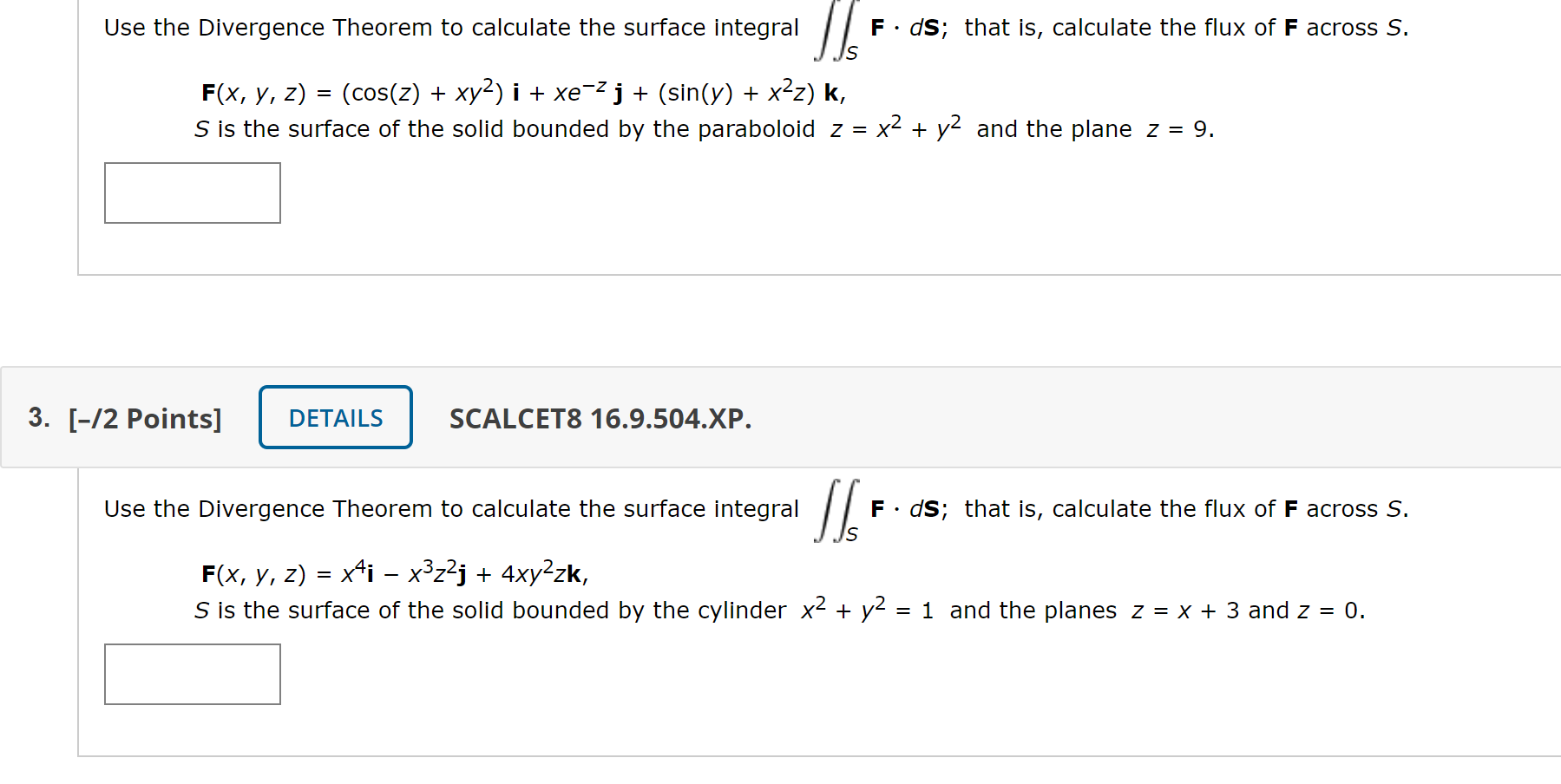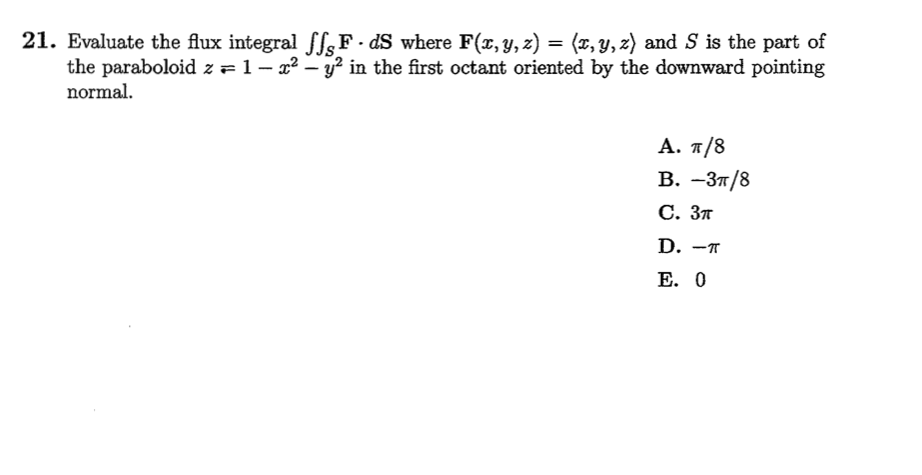

That's clearly positive, and it's simple enough to make a symbolic integration feasible. As we indicated is last week's lesson, it's usually easiest to leave off the absolute value at first, and thenĬhange the sign if the scale factor comes out negative. Recall that to integrate in the coordinates r, p, and t, we are going to have to insert a scale factor, the absolute value of the determinant of the Jacobian matrix of the change Note that since ellipsoid is a vector, all we have to do is "scalar multiply" it by r: We can do this most easily by adding a radial factor r that takes values between 0 and 1. We must now parametrize the solid ellipsoid. Although the computation of the divergence is trivial in the present case, we illustrate the syntax: To facilitate the calculation we have written a short M-file That's OK here since the ellipsoid is such a surface. But one caution: the Divergence Theorem only applies to closed surfaces. The Divergence Theorem predicts that we can also evaluate the integral in Example 3 by integrating the divergence of the vectorįield F over the solid region bounded by the ellipsoid. Where Sigma is the surface of Problem 1 and G is defined by the input line below. The outward normal should point in the positive x direction.īefore we can evaluate the integral, we must evaluate F in terms of the parameters.įlux = symint2(realdot(Fpar,ndS),p,0,pi,t,0,2*pi) We can check that we have the outward normal by setting p=pi/2 and t=0, giving us the point of the ellipsoid that is on the positive x-axis. NdS = cross(diff(ellipsoid,p),diff(ellipsoid,t)) Where the integral is taken over the ellipsoid E of Example 1, F is the vector field defined by the following input line, and n is the outward normal to the ellipsoid.

Flux IntegralsĪlso allows us to compute flux integrals over parametrized surfaces. Where Sigma is the surface whose area you found in part (a). (a) Compute the surface area of the portion of the paraboloid z = 9 - x^2 - y^2 that lies above the xy-plane. This is right since we can also "unwrap" the cone to a sector of a circular disk, with radius 4*sqrt(2) and outer circumference 8*pi (compared to 8*pi*sqrt(2) for the whole circle), so the surface area is Since r is positive, we can ignore the sign csgn(r), and the surface area isĬonesurf=symint2(2^(1/2)*r,r,0,4,t,0,2*pi) The picture is: ezsurf(cone(1),cone(2),cone(3),)Ĭonesurffactor=simple(veclength(cross(diff(cone,r),diff(cone,t)) )) The equation of the cone in cylindrical coordinates is just z = r, so we can take as our parameters r and t (representing theta). Here's another example: suppose we want the surface area of the portion of the cone z^2 = x^2 + y^2 between z = 0 and z = 4. Integral=newnumint2(surffactor*func,p,0,pi,t,0,2*pi) Over the surface, we must express it in terms of the parameters and insert the result as a factor in the integrand. This is going to be too complicated to integrate symbolically, so we do a numerical integration, using the numerical integrationĪrea=newnumint2(surffactor,p,0,pi,t,0,2*pi) Surffactor = simple(veclength(cross(diff(ellipsoid,t). Now we compute the surface area factor: realdot = u*transpose(v)

To check that this really is a parametrization, we verify the original equation: simplify(subs((x^2/4)+(y^2/9)+z^2,ellipsoid))Īnd we can also draw a picture with ezsurf:Įzsurf(ellipsoid(1),ellipsoid(2),ellipsoid(3),) We may parametrize this ellipsoid as we have done in the past, using modified spherical coordinates: syms x y z p tĮllipsoid= To see how this works, let us compute the surface area of the ellipsoid whose equation is Which enables us to compute the area of a parametrized surface, or to integrate any function along the surface with respect Taking lengths on both sides of the above formula above gives The key idea behind all the computations is summarized in the formulaĪre vectors, and their cross-product is a vector with two important properties: it is normal to the surface parametrizedīy P, and its length gives the scale factor between area in the parameter space and the corresponding area on the surface. In other words, the surface is given by a vector-valued function P (encoding the x, y, and z coordinates of points on the surface) depending on two parameters, say u and v. Recall that a surface is an object in 3-dimensional space In this lesson, we will study integrals over parametrized surfaces.


 0 kommentar(er)
0 kommentar(er)
